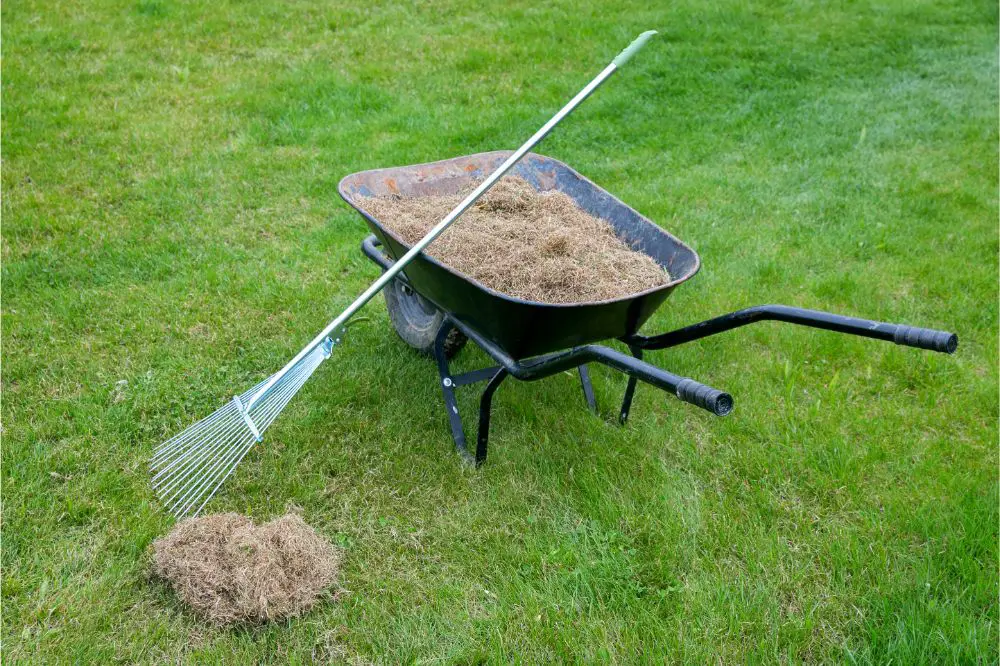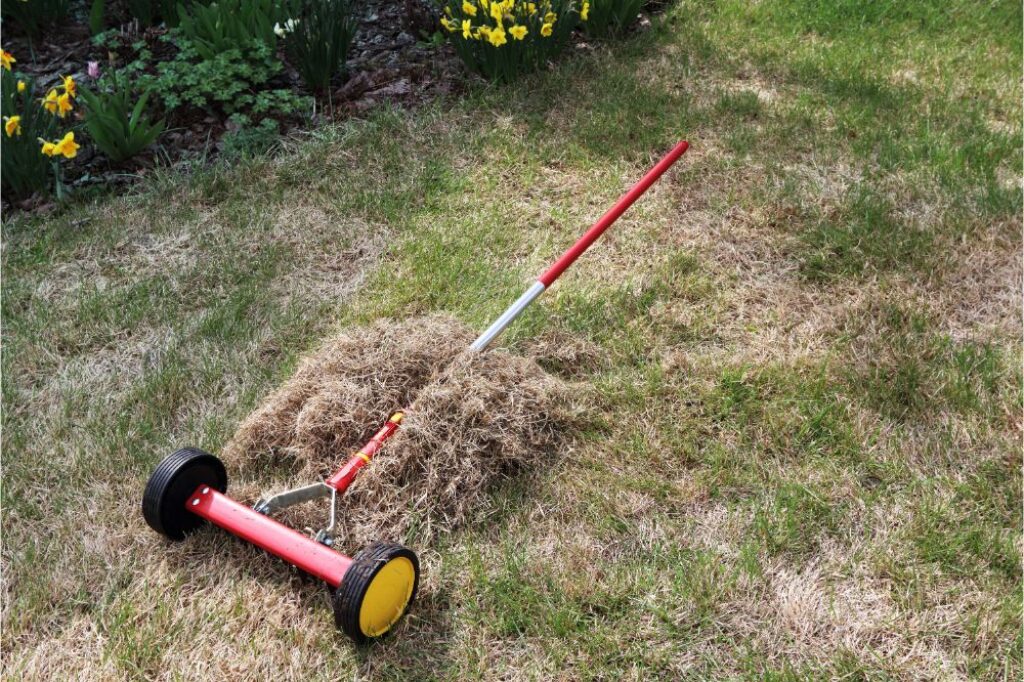GardenerHeaven.com is reader-supported. When you buy through links on our site, we may earn an affiliate commission.

Some might wonder what a thatch rake is. Simply put, it is a rake you can use to remove thatch from a lawn with utmost ease. One of the main benefits of using such a rake is that, through it, you can eliminate thatch with minimal damage to the grass. For small lawns – 1500 square feet or less – the best tool for such a task is the thatch rake.
How Do I Prepare My Lawn for Dethatching?
Dethatching should be done when the soil is wet but not dumped. Therefore, the lawn should be watered thoroughly two days before plans for dethatching are made.
When using dethatching machines, ensure that you mark all shallow irrigation paths, buried utility lines, or sprinkler heads before beginning.
Your lawn should be mowed to 50% of its original height prior to dethatching.
For a rented dethatching machine, enquire with your rental agency before adjusting the cutting depth and spacing for the particular type of grass. The tines or blades need to be set to cut a maximum depth of half an inch into the ground. Additionally, you should seek directions on the proper usage of this machine. Remember that a dethatching device might be weighty. Therefore, it should be transported in a large van or truck, and someone should be enlisted to assist with loading and unloading it.
What Tools Are Used in Dethatching a Lawn?
Similar to when cooking, you should have every material and tool you might need ready to go before beginning. Your machine will bring up a lot of additional items than you might imagine. Be ready with a nice large leaf rake for removal of the thatches into rows, and ideally sized wheelbarrow for transportation, and a nice place to act as a damping space.
Remember not to enter the thatch into a waste stream, if possible. It will not decompose fast, and we must be responsible for our yard waste. Run a dethatching machine over the yard at least thrice in varying directions every instance. Your machine needs to churn up approximately the same organic debris volume every time you pass.
Aftercare
For a couple of weeks, the dethatching process will usually leave a lawn with a seemingly worse appearance. Regardless of the particular dethatching technique you use, cushion the lawn instantly with a high-quality fertilizer and deep watering. The grass requires tender, loving care to become as resilient and vibrant as before.

Dethatching a Lawn Using a Rake
If you wish to dethatch a lawn using a rake, ensure that you:
- Use specialized thatch rakes and not garden or leaf rakes.
- Adjust the head angle of the thatch rake for added or reduced dethatching aggression.
- Pull your rake through the lawn. You should see and feel the thatch loosening.
- Push your rake through the lawn to remove the thatch from the tines.
- Continue until you clear the thatch layer from the lawn.
- Following dethatching, use a leaf rake to collect loose thatch. The thatch should then be properly discarded.
If you use the correct tool, set the thatch angle on your rake’s head, and use the right method, using thatch rakes is an efficient and quick means of reducing the thatch layer in a yard. The yard will appreciate your efforts towards fostering thicker and greener foliage.
Which Rake Should I Use for Dethatching?
The ideal rake to use when removing thatch is the special thatch rake. Sporting a thatch rake is easy, thanks to its double-sided, tough head.
Thatch rakes have heads with twin sets of tines – straight on a certain side, curved on the ulterior end.
The straight tines are ideal for dethatching, whereas the curved ones assist in preparing the soil.
A nice thatch rake should have a flexible head, which lets you adjust the angle of your tines as desired for gentler or more aggressive dethatching.
A superior thatch rake has an easy system with wing nuts and bolts to let you adjust the angle of your rake’s head.
This enables you to tackle heavy or light thatching without harming the lawn.
Ten Simple Steps To Follow While Using Thatch Rakes
Making use of a thatch rake might appear to be easy. However, there are some tricks and tips to ensure that your task is completed quickly and with the utmost ease as you eradicate the thatch from your lawn. Be sure to adhere to the following guidelines:
- Lay out a dethatching plan over early spring.
- Mow the lawn to a height of two inches.
- Assess the thatch rake’s head from above. One side should have straight tines, whereas the other should have a curved tines set. The straight tines should be used to dethatch.
- Shift the head of your thatch rake. For tines that are perpendicular to the handle, deep digging is possible for pulling up extra thatch. For those angled towards you (upwards), the dethatching should then be extra gentle.
- For instances where the lawn has significant thatch accumulation of over an inch thick, adjust tines for aggressive lawn dethatching. The tines should be angled for soft dethatching where the thatch layer is reduced to protect grassroots.
- Pull your thatch rake across the grass. You will see and feel brown thatch becoming loose if you are successful.
- Push your rake back over the grass to wipe the removed thatch off your rake tines.
- The push-pull technique should be utilized while working the rake to and fro in the region where you are eliminating thatch.
- Provided that you are pulling up dead material – brown thatch – your rake is working efficiently. If you realize significant green grass getting pulled up, alter the angle of the tines to a lower setting.
- Upon dethatching a region, use garden rakes to collect thatch for disposal.
This easy technique will work quickly in smaller-size yards. Through utilizing the push-pull technique with a thatch rake, the tines slide over the ground. Your workload is thus reduced since you are no longer required to constantly drop and lift the weighty thatch rake’s metal head. This saves your back and accomplishes the job with ease.
Conclusion
While dethatching your lawn, you should only use a specialized dethatching rake. Ordinary garden and leaf rakes are not tailored to tackle such thatch. Upon acquiring the correct tool for the task, adjust the thatch rake head angle to remove extra or less thatch.




